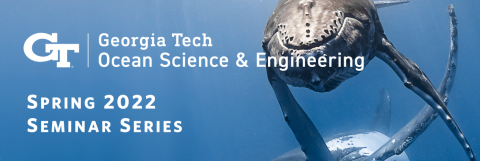event
The Spring 2022 OSE Seminar Series w. Invited Speaker Melissa Ruszczyk
Primary tabs
Dual Phase-Shifted Ipsilateral Metachrony in Americamysis bahia
ABTRACT: Metachronal propulsion occurs in multi-appendaged organisms, when appendages beat one after another in an adlocomotory sequence. Previously documented metachrony in euphausiids consists of one, 5-paddle metachronal stroke, where pleopod pairs on the same abdominal segment beat in tandem with each other, propelling the animal forward. In contrast, the mysid shrimp Americamysis bahia’s pleopods on the same abdominal segment beat independently of each other, resulting in two, 5-paddle metachronal cycles running ipsilateral along the length of the body, 180° out of phase. The morphology, kinematics, and nondimensional measurements of efficiency are primarily compared to one-cycle euphausiids to determine how the two-cycle approach alters the design and kinematics of metachrony. Pleopodal swimming in A. bahia results in only fast-forward swimming, with speeds greater than 2BL/s (body lengths per second), and can reach speeds up to 12BL/s, through a combination of increasing stroke amplitude, beat frequency, and changing their inter-limb phase lag. Trends with Strouhal number and advance ratio suggest that the kinematics of metachrony in A. bahia are favored to greater normalized swimming speeds than euphausiids.
SEMINAR SPEAKER
Melissa Ruszczyk
OSE Ph.D. Candidate
Status
- Workflow status: Published
- Created by: belnaggar3
- Created: 01/11/2022
- Modified By: belnaggar3
- Modified: 01/13/2022
Categories
Keywords
Target Audience

